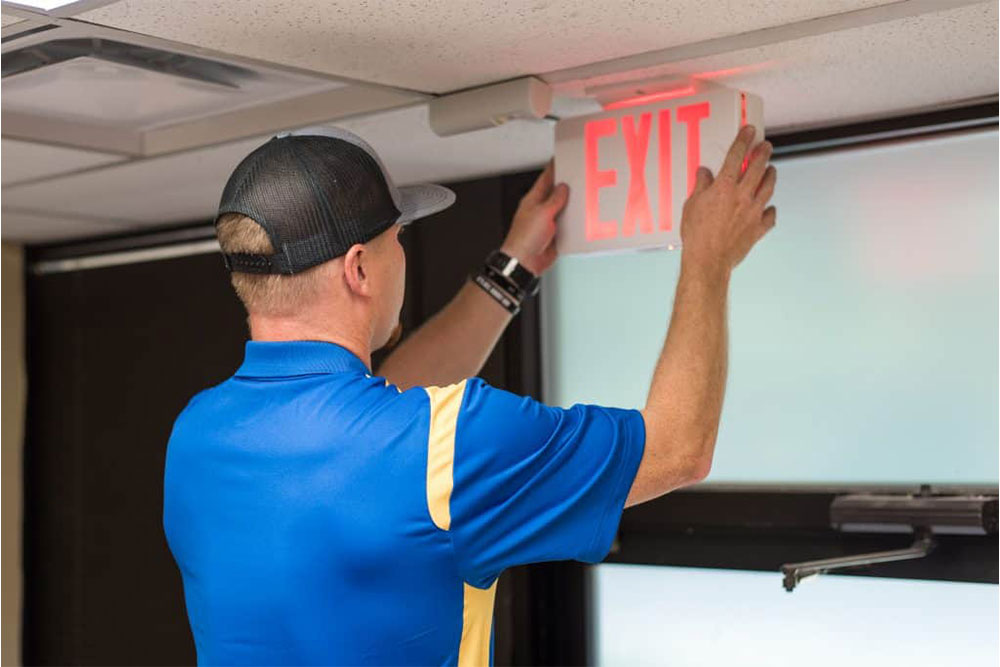 13
Feb
13
Feb
Emergency Lighting Maintenance Checklist To Simplify Your Routine
- 0 Comment(s)
- February 13, 2025
Emergency lighting is an integral part of any building’s safety system. It helps occupants safely navigate to exits during power outages or emergencies. Regular emergency lighting maintenance keeps these systems dependable when they are needed most. Without consistent care, faulty lighting can create unnecessary hazards and non-compliance issues. A structured maintenance approach not only keeps the equipment operational but also ensures adherence to safety standards.
The Importance of Maintaining Emergency Lighting Systems
Emergency lighting serves as a lifeline during dangerous situations, providing visibility when regular lighting systems fail. It helps guide people to safety, reducing the risk of injury and confusion during evacuations. Over time, environmental factors and wear can degrade these systems, requiring regular maintenance to keep them operational.
Maintaining emergency lighting is also essential for meeting safety regulations, such as those outlined by NFPA. Regular inspections and repairs help identify potential issues early, ensuring the systems are functional when needed. A well-maintained lighting system reflects a commitment to the safety of everyone who uses your facility.
Inspecting Emergency Lighting Systems Regularly
Routine inspections are the foundation of a successful emergency lighting maintenance plan. Regular checks help identify common issues, such as dead batteries, faulty bulbs, or damaged fixtures. Monthly inspections usually involve pressing the test button on each unit to confirm its functionality for at least 30 seconds.
Annual inspections are more comprehensive, requiring systems to operate under backup power for a minimum of 90 minutes. Documenting these tests is important to track system performance and address recurring problems. Regular inspections ensure your emergency lighting remains reliable and ready to perform during unexpected situations.
The Role of Proper Cleaning and Care
Clean emergency lighting fixtures are essential for maximum visibility during emergencies. Dirt, dust, and debris can reduce the brightness of lighting systems, making them less effective. Regular cleaning of lenses and housings prevents buildup and keeps lights functioning properly.
Use non-abrasive cleaners and a soft cloth to gently remove grime from surfaces. During cleaning, inspect the fixtures for cracks, corrosion, or other damage that might compromise their performance. Proper care not only enhances the system’s functionality but also extends its lifespan, ensuring a safer environment for everyone.
Battery Maintenance for Emergency Lighting
Batteries are the heart of any emergency lighting system. Without a reliable power source, these systems cannot function during a power outage. Routine battery maintenance helps prevent unexpected failures and prolongs their lifespan.
Inspect batteries for signs of corrosion, low charge levels, or physical damage. Replace old or faulty batteries promptly to maintain system reliability. It’s important to use batteries that match the manufacturer’s recommendations for your system. Regularly testing battery capacity during inspections ensures the lights will perform for the required duration in emergencies.
The Importance of Placement and Visibility
Proper placement of emergency lighting systems determines their effectiveness in guiding people to safety. Lights should illuminate exit routes, stairwells, hallways, and areas leading to exterior exits. Placement should align with the building layout, ensuring all pathways are visible.
Verify that no objects obstruct the lights and that all fixtures remain in plain view. Adjust placements as needed when making changes to the building’s design. Visible and well-placed emergency lighting provides clear direction during evacuations, reducing confusion and improving safety outcomes.
Testing and Documentation for Compliance
Testing emergency lighting systems regularly supports both safety and regulatory compliance. Monthly and annual tests verify the reliability of each unit and highlight any maintenance needs. Testing includes activating the system for specific durations and checking for malfunctions.
Documenting test results helps track the performance of your systems and provides proof of compliance during inspections. Records should include the inspection date, any identified issues, and the corrective actions taken. Keeping detailed documentation simplifies regulatory requirements and ensures a consistent maintenance routine.
Staff Training for Emergency Lighting Maintenance
Well-trained staff are an important part of any maintenance program. Teaching your team how to test, clean, and replace components ensures issues are addressed promptly. Employees should know how to press test buttons, replace batteries, and clean fixtures as part of their routine duties.
Regular training sessions reinforce these skills and keep employees updated on safety protocols. A knowledgeable team is better equipped to identify potential issues and take immediate action. Training fosters a proactive approach to maintenance, helping your business prioritize safety and preparedness.
Partnering With Professionals for Inspections and Repairs
While routine maintenance can be handled internally, working with fire safety professionals adds an extra layer of reliability. Professionals can conduct detailed inspections, perform complex repairs, and provide expert guidance tailored to your needs. Emergency lighting systems are fundamental for protecting lives during emergencies. A structured emergency lighting maintenance routine, including regular inspections, cleaning, and battery care, keeps these systems reliable and effective. Combining internal efforts with professional support allows you to maintain safety and compliance with ease.
At Yadkin Fire & Safety, we are committed to supporting your safety goals with expert advice and quality services. For assistance or to learn more about how we can help, contact us today.

